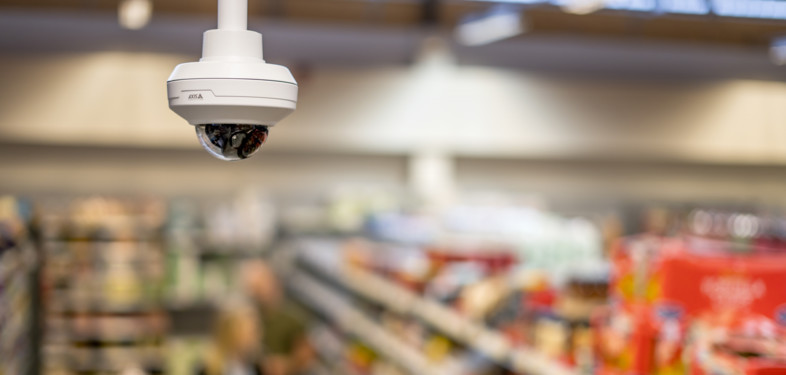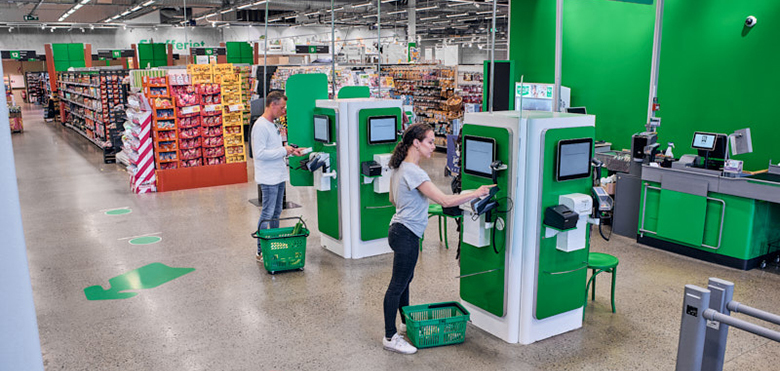How AI and computer vision are driving the future of retail
The retail industry has faced several changes over the past few years, including increased online trade, digitalization within stores, changes to the workforce and even shoppers’ preferences. These changes have led to further innovation in physical retail stores and even accelerated some existing developments.
One such advanced technology that is gaining a lot attention in retail is artificial intelligence (AI), especially within the context of the growing use of smart analytics in network video cameras. Computer vision, which is a subsector of AI that allows cameras to ‘see’ and gain meaningful insights from digital images and video, has the potential to transform the retail sector. This technology could not only provide you with the data and insights needed to tackle some of your biggest challenges such as loss prevention, staffing, sustainability and inventory management, but also help improve the shopping experience – all from the same system.
Real-time analytics supports loss prevention
Unfortunately, loss prevention continues to be a major issue within the retail industry. In 2021, the NRF reported that the average shrink rate was 1.4%. When taken as a percentage of total retail sales that year, shrink represents $94.5 billion in losses. This isn’t an insignificant sum, and its critical for you to address this problem within your store environment by identifying the hot spots for potential theft, such as the self-checkout area.
Customers can implement different tactics to evade payments, which can be tempting when there isn’t a physical employee to monitor them. That being said, removing these payment points would be detrimental, as there are many benefits of self-checkouts. They can reduce waiting times and even improve the customer experience.
In fact, according to research published by Gitnux in 2023, 73% of consumers prefer self-checkout over staffed checkout lines. This preference will continue to drive the adoption and expansion of self-checkout options in stores, so it is critical to mitigate the risk of theft.
This can be achieved by installing cameras equipped with computer vision and advanced analytics software in your self-checkout areas to detect non-scanning of products, covering of bar codes and other suspicious behavior. Your security staff would then be notified to investigate and potentially intervene.
Going one step further, AI can be used to collect insights into the self-checkout process to identify patterns and better understand how theft occurs. This would enable you to implement countermeasures to reduce shrinkage and positively affect your bottom line.
Supporting operations and the customer experience
Convenience is high on the priority list for shoppers, especially in terms of extended store opening times and a reduced purchasing journey. This can be achieved through the smart use of automation and advanced technology. Network cameras equipped with software can be used to manage in-store processes such as replenishing low stock and monitoring footfall, allowing staff to provide high quality advice and recommendations to shoppers. This is particularly important during your busy periods, when customer frustrations can run high.
There is also a shift towards more hybrid store models which utilize technology to enable browsing and purchasing in the absence of on-site staff. This allows them to extend opening hours without limiting access during times which are convenient to shoppers. This is where computer vision can also be implemented to gain insights into your stores. Network cameras equipped with AI capabilities can track when customers add items to their baskets, how long they spend in store and where, any points of friction or bottlenecks and other in-store behaviors. This information can inform any changes you make to positively impact the customer experience.
Inventory management gets an upgrade
Lack of stock is one of the major frustrations experienced by shoppers and can be the source of losses of revenue. According to a NielsenIQ analysis of on-shelf availability – which is the number of products that are available for purchase at a given place and time – empty shelves cost U.S. retailers $82 billion in missed sales in 2021 alone, which could have been avoided.
Traditionally, your staff would manually check shelves for stock levels and replenish products at standard times of the day. However, the gap between detecting and restocking can represent a missed opportunity for you to generate sales, especially on popular items.
Computer vision can help in this instance. Modular or standalone cameras can capture video images of your shelves, while a machine learning and image processing algorithm analyzes data about stock placement and availability. When the need for replenishment is detected, a real-time alert is sent to a dashboard or mobile app informing your staff of the need to re-stock specific items. This added agility and flexibility ensures that stock levels remain responsive to your customers’ demands.
Utilizing AI to reach your sustainability goals
While it’s easy to see the immediate impact of using computer vision and AI within your store environment when thinking about operational efficiencies and profitability, you can also use these technologies to improve your sustainability metrics.
You can implement AI to monitor your stocking levels, ensuring that you respond directly to demand and avoid having surplus stock, which could be destroyed or go to landfill. You can also utilize AI forecasting tools to better manage stock and help you achieve carbon neutrality by monitoring emission rates. Outside of your four walls, AI is also useful within your logistics network, helping to improve the accuracy of product deliveries and maximizing truck capacity, thereby avoiding unnecessary trips which would contribute to emissions.
The future of retail will be underpinned by analytics
The potential for AI in video surveillance is promising. Network cameras equipped with computer vision can enhance video analysis, enabling threat detection, motion detection, object recognition, and a better understanding of in-store behaviors.
This allows your staff to focus on providing a high-quality service which improves the customer experience and encourages repeat business and loyalty to your brand. You can also use AI to forecast trends and customer preferences, which helps you to plan inventory, marketing campaigns, and product launches more effectively. There is also an added benefit in terms of supporting your sustainability goals. By using the insights gained from this technology, you could ensure that you were minimizing waste and optimizing your logistics.
Although the benefits of AI are numerous, as with any data-collection and analysis activity, it’s important to consider the ethical concerns around privacy and potential misuse of the technology before implementing. This is an ongoing and ever-evolving conversation which you will need to navigate as you strive to make changes within your surveillance system that will benefit your business beyond ensuring safety and security. Utilizing AI within your surveillance system will enable you to ultimately make better business decisions and increase profits in the long term.
Click here to find out more about Axis’ solutions for retail


